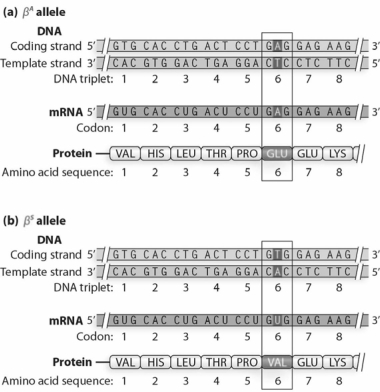Multiple Choice
At a biological level, βAβS heterozygotes suffer fewer cases of malaria than βAβA homozygotes, and when they do get malaria, their disease is less severe. What is the biological explanation for the heterozygous advantage? 
A) The βAβA homozygotes have a shortened average life span of their red blood cells, and the shorter RBC life spans interrupt the developmental cycle of Plasmodium larvae by causing the parasites to mature and reproduce rapidly.
B) The βAβS heterozygotes have a shortened average life span of their red blood cells, and the shorter RBC life spans interrupt the developmental cycle of Plasmodium larvae by preventing many of the immature parasites from reaching maturity.
C) The sickle-cell shape of the RBCs in βAβS heterozygotes causes the Plasmodium larvae to become stuck in the RBC aggregates, which prevents reproduction.
D) The anemia associated with SCD makes the βAβS heterozygotes less attractive to mosquitoes, so they experience fewer mosquito bites and less opportunity for infection by Plasmodium larvae.
E) The βAβS heterozygotes are bitten by mosquitoes less frequently, and when they are infected, the sickle-cell shape of the RBCs in βAβS heterozygotes causes the Plasmodium larvae to become stuck in the RBC aggregates, which prevents reproduction.
Correct Answer:

Verified
Correct Answer:
Verified
Q3: Before transferring DNA from a gel to
Q35: In contrast to the nucleic acid probes
Q36: Northern blotting is not useful in detecting
Q37: A restriction map of β<sup>A</sup> and β<sup>S</sup>
Q38: We can detect the SNP in the
Q39: The rate of molecule movement in electrophoretic
Q41: You have digested a molecule of DNA
Q42: The different globin genes in each cluster
Q44: Given the following gel, which protein has
Q45: The mutation that causes SCD causes what